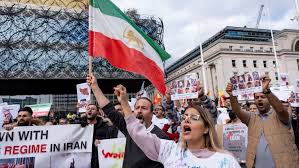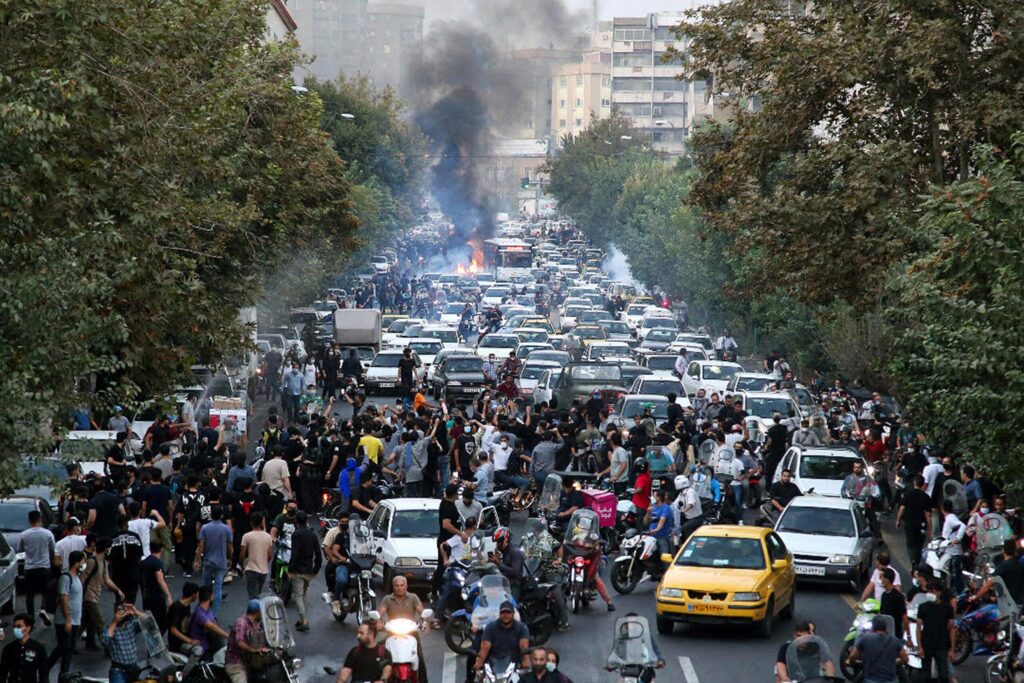On September 17th, 2022, fierce protests broke out in Saqqez, Iran. Streets filled with the smoke of tear gas, the flames of new fires, and the screams begging for freedom and justice. The anger, fear, and desperation spread like wildfire from that town in Northwest Iran all the way to Tehran – the city where the source of all this outrage began. On September 16th, a young woman named Masa Amini from Saqqez, Iran, was visiting Tehran with her family. It was their last family trip before she was to head off to University to study microbiology that next week. She hoped to become a doctor one day. Masa never finished that trip as later that day; she was abruptly arrested by the morality police for not wearing her hijab to their standards and allegedly violating Iran’s Islamic dress code. While in custody, she fell into a coma and died in a hospital in Tehran. Her family was only able to see her when her lifeless body had been wrapped for burial, with only her feet and face visible. Mr. Amini, her father, stated that her feet were bruised, and he had asked doctors and authorities to look into what happened but heard no response. Instead, they promulgated information about Masa having health issues and even brain surgery at age eight, but her family and friends state that all of these statements are false. The family has not received an autopsy of her death. It is now heavily suspected that the cause of her coma was the physical battery she experienced at the hands of the morality police and not a heart attack, as the police are currently claiming.
Masa Amini is the current face of a growing movement within Iran demanding women’s rights and an end to the current Iranian regime led by Supreme Leader Ali Khamenei, who has been facing backlash from teachers, farmers, and middle-class professionals for the dire state of the country’s economy. Many see the regime and its morality police as individuals who have taken the Islamic religion and twisted it to enforce their oppressive ideology, particularly on women.
Protests breaking out over Iran have been resisted by police in riot gear who have used batons, water cannons, tear gas, and even fired projectiles to disperse protestors. Protestors have burned headscarves, marched the streets with anti-regime slogans, and remained undeterred by any police who stand in their way. The fight has grown so much that the authorities have blocked the internet to prevent the unrest from spreading.
According to Iran Human Rights, a human-rights organization based out of Norway, at least 201 protestors have died at the hands of law enforcement. Every time there is a protest, a wave of injured protestors come into public hospitals to receive treatment. But they are not alone. Iranian law enforcement officers have been going undercover to get into emergency rooms in public hospitals and search for injured protestors to arrest instead of letting them receive treatment. The doctors who are treating injured protestors are also at risk of arrest – or worse – by law enforcement.
Arash, a 30-year-old Iranian doctor who is using a pseudonym to protect his identity, stated to CNN that he and his colleagues have grown adept at spotting undercover police officers who try to get into the hospital. They do their best to keep law enforcement out by giving fake names to the people they are treating or just refusing to provide information. Doctors and medics have also been working at the front lines of protests and lying about the nature of protestors’ injuries when they arrive at public hospitals. Injured protestors will seldom admit the source of their injuries, but doctors and undercover law enforcement will look for pellet wounds and baton bruises to identify them as these are tell-tale signs they have been to a demonstration.

The unfortunate reality is that protestors do not know which doctors will protect their identity and whether there are any undercover officers lurking in the halls of the hospital. Doctors are also putting their freedom and lives at risk as they too can be arrested by police for treating the injured, some of whom are undercover law enforcement. No one knows who to trust.
Kayvan Mirhadi, an Iranian American doctor based in New York state, has been contacting injured protestors via Instagram and helping connect them to trustworthy doctors who will protect their identity. Mirhadi receives over 500 messages a day, often accompanied by photos of the actual injury. One individual wrote, “Salam doctor…What to do with all these small bullets?… The hospital is full of police with ordinary clothing. The moment we enter there, they will arrest us. If the bullets remain inside, is it dangerous? Doctor, for god sake, please answer me.” One of Mirhadi’s friends, who is a doctor in Iran, was just arrested for treating injured protestors, and law enforcement will give no comment on his situation.
Even with the tremendous risk, they are taking to treat protestors, the act of treating injured demonstrators is how these doctors are participating in the protest themselves. They see the inhumane way in which law enforcement has treated Iranian people advocating for women’s rights and freedom from the dictatorship that has been running their country into economic turmoil while tainting their beloved religion to execute oppressive ideologies.
Nevertheless, even in the face of all the backlash and danger, the Iranian people have never given up on their audacity for equality. With or without the internet connecting them to the rest of the world, they know that freedom is a possibility and a necessity. Whether it be students marching the streets without their hijabs, middle-class workers pushing back against riot police, or doctors treating injured protestors, the Iranian people have joined together to fight for a better future.

